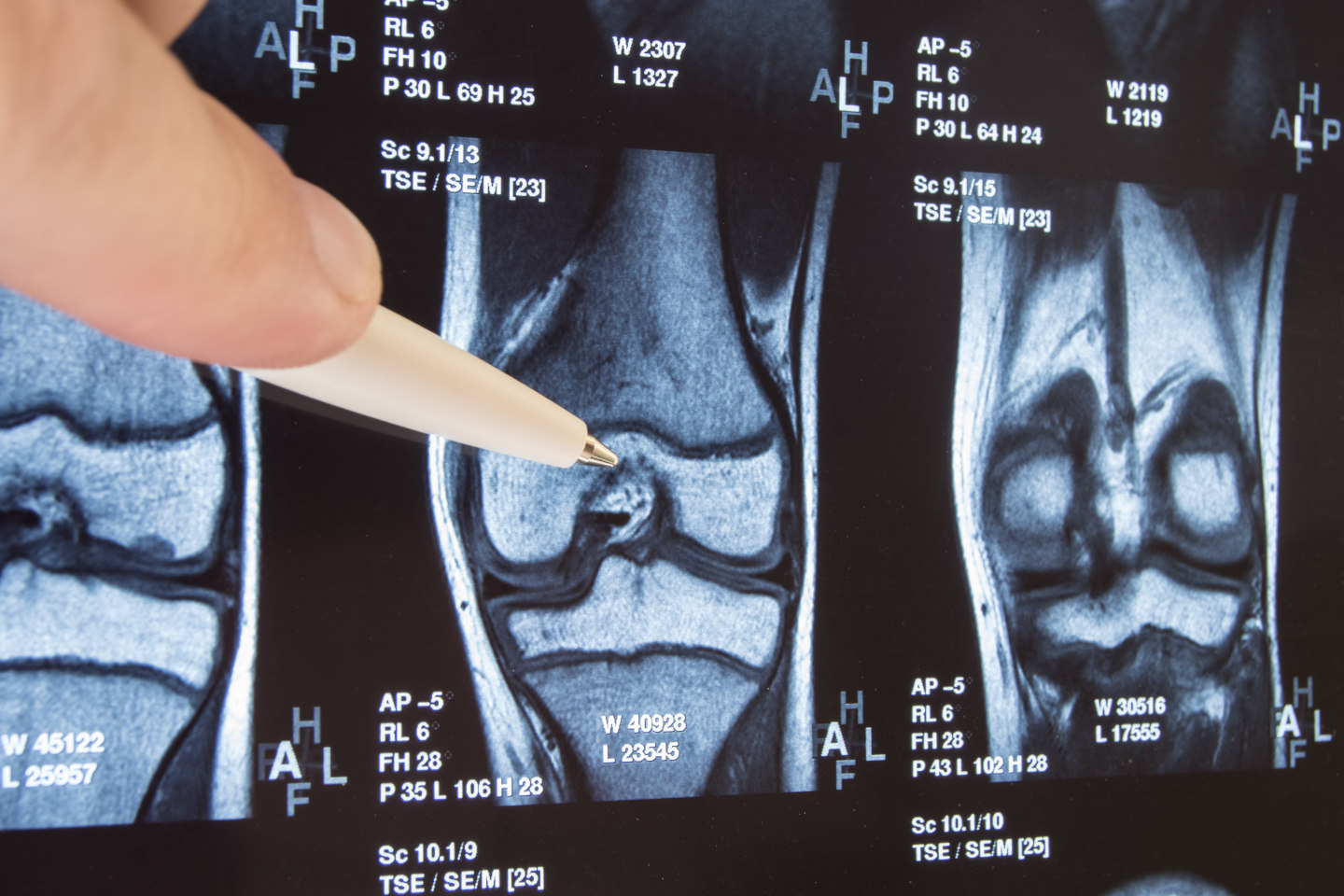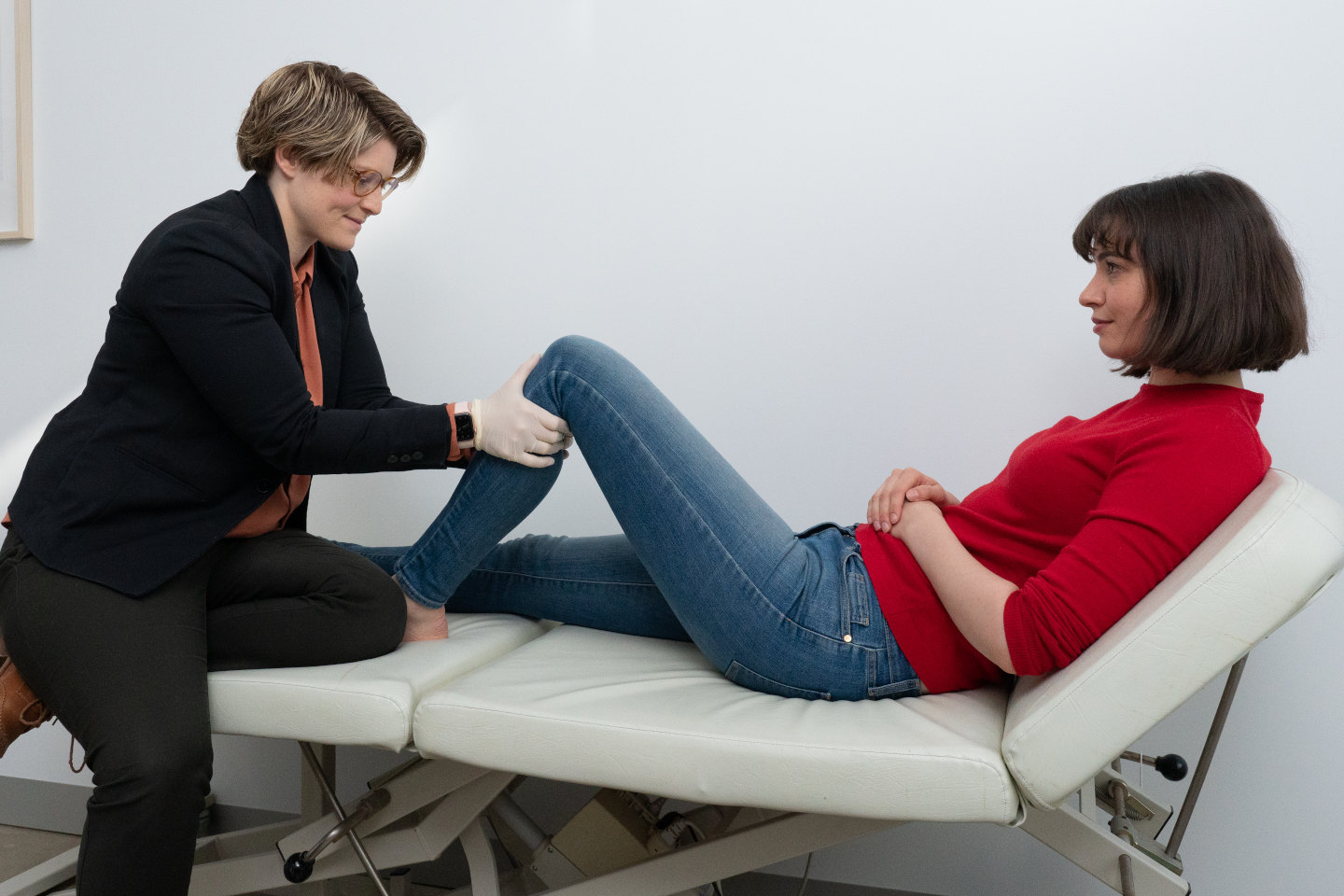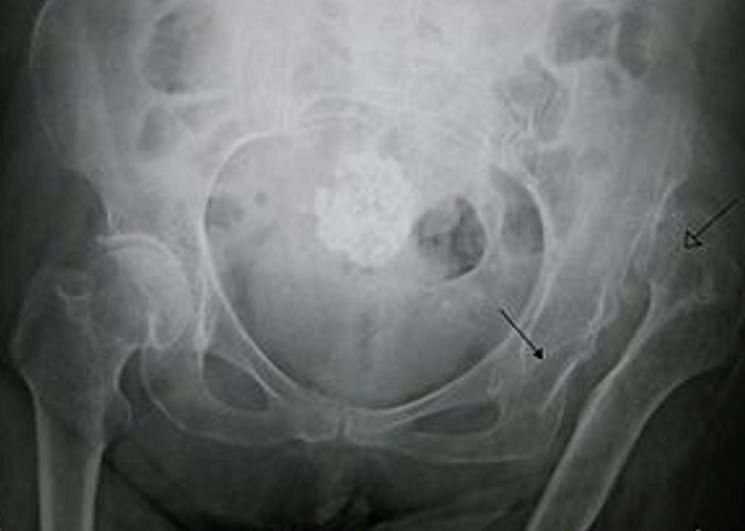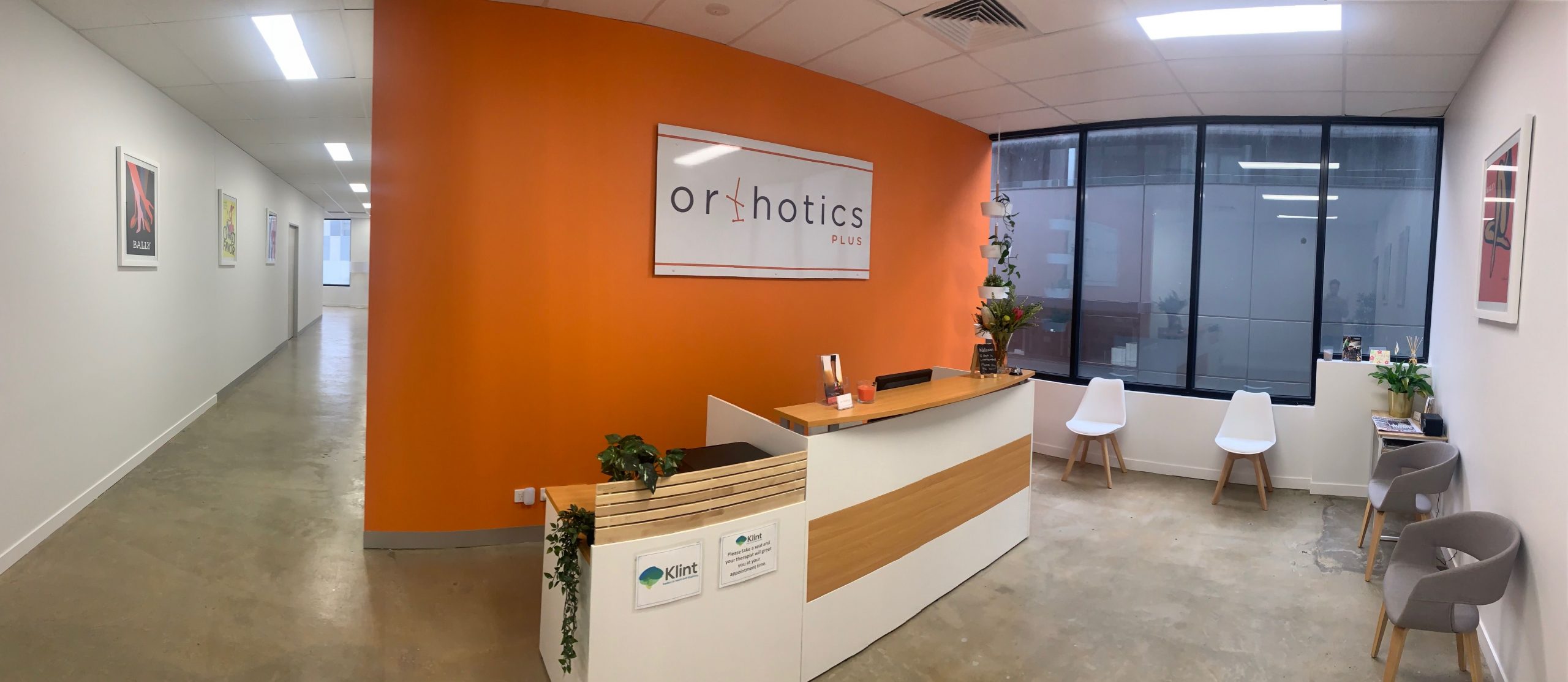In this article, we ask our senior Orthotist, Kate Perlstein, the most commonly asked questions from our community about leg length discrepancy.
Did we miss something? Feel free to contact our office and we’ll include it in the article.
What is leg length discrepancy?
A leg length discrepancy is when your legs are different lengths.
This discrepancy can be either:
Structural discrepancy– the difference is due to the bones being of different lengths.
Functional discrepancy– due to muscular contractures or scoliosis the legs appear and function as though they are of different lengths despite the femur and tibia being congruent in length with the opposite limb.
How severe can this discrepancy be?
It can vary greatly: One to three centimetres is what we would most commonly see, but extreme cases can exceed this.
Most people do have a mild leg length discrepancy and they’re not aware of it. Most people are five mm or so shorter on one side, and it doesn’t affect them at all. When it gets greater than seven to ten mm, that is when people generally notice it and have symptoms, especially as they get older. Their back might be feeling a bit sore or they’re getting a sore hip and they’re not quite sure why.

The biggest leg length discrepancy I have encountered is approximately eight centimetres, and that involved a patient who had multiple knee surgeries and a failed knee replacement. This patient experienced multiple associated infections and subsequent surgeries which contributed to the severe discrepancy.
Another potential cause of severe leg length discrepancy is a patient with polio or post-polio. Patient’s who have limb differences due to polio almost always have a leg length discrepancy and they can be quite large from the associated scoliosis and changes to weight bearing.
Out of the several causes, what one is the most common?
We most commonly see leg length discrepancies after hip surgery, especially hip replacement surgery.
In many cases, such surgeries result in some kind of change in leg length. Other less common surgical causes are knee replacements or traumatic bone injuries where the surgeon has had to shorten the bone to allow components to heal.
How is leg length discrepancy diagnosed?
There are a number of different ways that it can be tested.
The most accurate, but not necessarily the most helpful, is a full pelvis-to-foot x-ray, and then the radiologist measures the legs from bony prominence to bony prominence. This is not a holistic assessment because an x-ray may indicate that someone has a difference in leg length, but it doesn’t detect the degree to which the person’s mobility or quality of life may be affected.

Practitioners must strike a balance between what the clinical tests tell them and how the patient presents.
In short, we must identify the most practical solution. For example, as soon as you add a five-centimetre raise to someone’s shoe, the shoe’s weight is greatly increased. Now, if they’ve had hip surgery and they’ve got hip flexor weakness or glute weakness, they’re not going to be able to lift that foot easily. So you have to be able to find that balance between the clinical and the practical side of what the raise needs to be.
An alternative way to measure leg length discrepancy is from ASIS (anterior superior iliac spine– a bony prominence on the pelvis) through to the medial malleoli, a bony prominence on the ankle. You can lay a patient down and do that measurement using a tape measure on both legs.
Another more rudimentary way is to have the patient stand in front of you and you can put your hands on the top of the patient’s pelvis to try and see if they’re level. This measurement is imprecise but does give the practitioner a rough indication of the severity.
What are the symptoms of note with leg length discrepancy?

To me, it’s obvious when someone is walking whether they’ve got a leg length discrepancy or not, their gait tends to change or become quite asymmetrical. And at that point, it alerts you to the fact that something’s going on and then you can decide the best way of measuring that and the best way of treating it from there.
Another common indication is pain. This can manifest as lower back, glute, or foot pain. Often you see patients tend to have their affected foot move into a cavovarus position. It’s essentially like them trying to stand on their toe to try and lengthen their leg. They can sometimes have pain on the side of the short foot because of their altered foot posture whilst they’re walking.
They’ll also often stand favouring one leg or hyperextend one knee to reach a level pelvis.
How is leg length discrepancy treated from minor to major cases?

For minor cases (<1cm discrepancy), you can often treat that with a heel wedge inside the shoe.
For cases of discrepancies over 1 cm, these can rarely be treated with internal changes inside the patient’s shoe as few shoes are designed to allow for the addition of a large wedge as they become too uncomfortable and the heel pops out of the back of the shoe (with the exception of work boots).
More commonly, we would look at modifying the exterior of the shoe with what we call a heel and sole raise, which is essentially a raise from the heel to the toes of the shoe.
Our general aim is to get the patient as level as possible via a solution which works for their lifestyle.
Can leg length discrepancies be cured?
From a non-surgical perspective, the leg length discrepancy is not going to change.
If they’ve got foot pain or knee or hip pain as a result of the leg length discrepancy, we might be able to assist with those symptoms by increasing their shoe height. But the leg length is not going to change.
There are surgical options, such as a tibial lengthening procedure.
For a tibia lengthening procedure, the surgeon sections the tibia and the fibula, and then they put a cage around the leg for stability. It is then a gradual process of winding it out slowly, allowing the bone to grow, filling the gap, and the process is repeated.
Patients doing leg lengthening procedures can be in the hospital for a very long time, and it can take months to years to get an inch or so of improvement.
Could you describe the treatment and management process for leg length discrepancy in a new patient with no existing treatment plan?

In that case, the patient would often present with pain, whether it’s a foot, knee, glute or lower back, and part of our assessment would involve checking leg lengths.
If the leg lengths seem to be affecting the patient, then the practitioner would piece all the relevant symptoms and patient history together to determine the most practical solution.
So we would likely seek to manage the case from an orthotic perspective but would consider what other interventions may be required. For example, if we felt a significant contributing factor was glute weakness because they’ve had hip surgery, we would suggest physio would be required for appropriate strengthening.
What are the most common patient demographics for this condition?

It is remarkably varied.
For cases that are caused by surgery, patients tend to be older.
Does it have any relation to hip dysplasia?

There could be a relationship between the two conditions. If a patient had a bad case of hip dysplasia that was not promptly diagnosed or managed, the socket can sometimes shift upwards and form a false acetabulum, and that way you’re going to end up with a different leg length.
Sometimes the quality of life is only impaired after several years before the leg length discrepancy becomes a problem, which could be 30, 40, 50, or 60 years down the track from them potentially having hip dysplasia. So there could be a number of things that could have gone wrong along the way.
I know someone living with symptoms from leg length discrepancy, can you help?

Yes, we would love to hear from you.
- Orthotics Plus offers conservative solutions that can be prescribed in an appropriate order
- We are university qualified
- We work alongside specialists and Physiotherapists across Melbourne
- We were established over a decade ago and help hundreds of paediatrics and adults with their lower limb issues
Feel free to use our clinic locations page for bookings or questions.